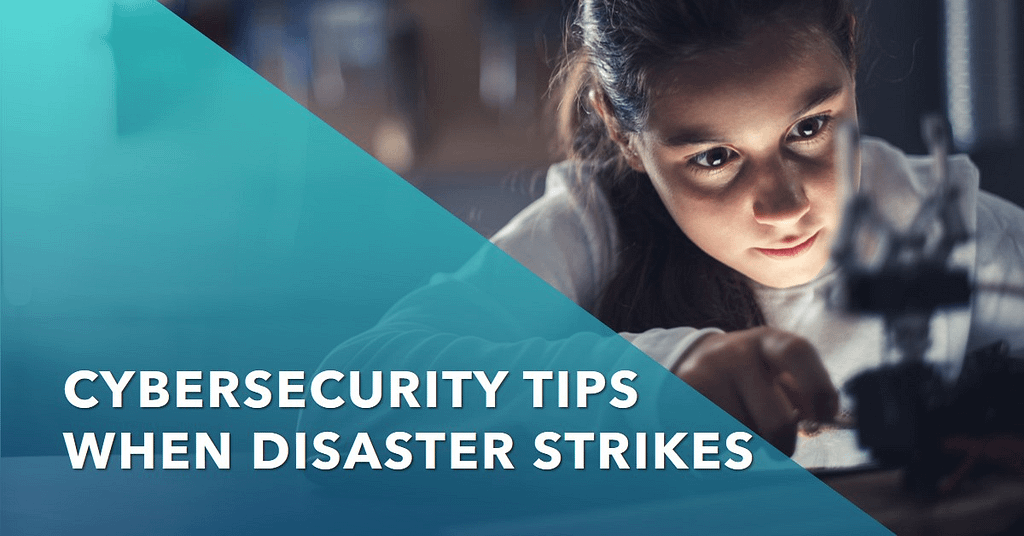
Brief Introduction: Our Digital Wild West
Can you Imagine a world where outlaws roam freely, pilfering anything valuable We can find. Welcome to the techtunecentre.com by which such wonderful contents you can see here, wild west of cyberspace, where cybercriminals lurk around every corner, waiting to snatch our data, disrupt our valuable life, and line their pockets with ill-gotten gains.
Do you know? The statistics paint a grim picture, According to Cybersecurity Ventures, global cybercrime costs are projected to reach a staggering $10.5 trillion annually by 2025. That’s more than the combined GDP of Germany and Canada! The victims? Everyone. From individuals to businesses, large and small, no one is immune the system.
But not to worry, In our brave citizen! This 10,000-word guide equips you with the knowledge and tools to fight back with them & protect. We’ll delve into the underbelly of cybercrime, exposing the most common tactics used by these digital bandits, and unveil battle-tested strategies to protect our self from their such schemes.
Part 1: The Rogues’ Gallery: Unveiling the Different Types of Viruses
We need to understand the first step to winning any battle is understanding your enemy. Below are comprehensive guide to the most prevalent virus types but not limited to these virus only.
- Malware Mania: This is umbrella term encompasses of virus attack which have a wide range of malicious software. Think of it as the villain’s arsenal. There viruses that replicate and spread like wildfire, worms which burrow into systems independently, and Trojan horses that masquerade as legitimate software to trick our data into letting them in.
- Ransomware Rampage: Just imagine a digital kidnapper! Ransomware virus encrypts our files, rendering them unusable. Attackers demand a hefty ransom to unlock your data. This is a particularly insidious threat to businesses and individuals alike.
- Spyware Spooks: This is the stealthy attackers hide in the shadows & stealing our personal information, login credentials, and browsing history etc. They may even record your keystrokes, potentially exposing highly sensitive data.
- Phishing Phantoms: Such social engineering tactics use deception to lure victims. They often come in the form of emails or such fake websites that appear legitimate, tricking you into clicking malicious links or divulging personal information that cause hacking our system.
- Phishing’s Evil Twin: Smishing: Similar to above phishing emails, smishing uses text messages (SMS) as a delivery method. Think on it convincing “phishing” texts that appear to be from your bank or credit card company.

Part 2: The Art of Deception: How Cybercriminals Exploit Your Weaknesses
Cybercriminals are cunning and exploit human vulnerabilities. Here’s how they might try to gain access to your system:
- Preying on Fear: Phishing emails often exploit fear tactics. Think emails claiming your bank account has been compromised or your social security number stolen. Fear can cloud judgment, leading you to click on malicious links or attachments.
- The Urgency Trap: Cybercriminals create a sense of urgency, urging you to take immediate action without careful consideration. Phishing emails with subject lines like “URGENT: Verify your account!” or “Your order is on hold!” are designed to pressure you into clicking before thinking.
- The Curiosity Conundrum: Curiosity can be a double-edged sword. Malicious attackers might send emails with enticing subject lines like “You won a free vacation!” or “See who viewed your profile!” These prey on your natural curiosity, potentially leading you to click on a link and compromise your security.
Part 3: Arming Yourself for Battle: Essential Cyber Hygiene Practices
Now We understand the enemy’s tactics, it’s time to build your defenses. Here are essential cyber hygiene practices to keep our digital life secure:
- Software Superhero: We need to keep your operating system, software applications, and web browsers up-to-date. These updates often include security patches that fix vulnerabilities that cybercriminals might exploit. Think of it like regularly updating our armor with the latest upgrades to stay protected often.
- Password Powerhouse: We keep always strong passwords are our first line of defense. Use a combination of upper and lowercase letters with special character, numbers, and symbols. We should avoid using easily guessable passwords like your birthdate or pet’s name common use word etc. Consider using a password manager to generate and store strong, unique passwords for all your accounts.
- Firewall Fortress: Think of a firewall as a digital gatekeeper. It monitors incoming and outgoing traffic on your network, filtering out any suspicious activities or unauthorized access attempts. Ensure your firewall is enabled and configured correctly.
- Antivirus Arsenal: If we use reputable antivirus software program acts as our digital warrior, scanning our system for malware and threats in real-time. Schedule regular scans and Keep your antivirus software updated with the latest virus definitions to ensure it can detect and eliminate the newest threats.
- Suspicious Link Slayer: We should not click on links or open attachments in emails or text messages from unknown senders. Be wary of emails even from seemingly familiar senders, as email addresses can be spoofed. If we are unsure, contact the sender directly through a trusted channel to verify the legitimacy of such email & messages.
- Beware the Free Download Frenzy: We should avoid free software downloads can be tempting, but some might be bundled with malware. Download software only from trusted sources and be cautious of unknown websites offering free downloads.
- Social Media Savvy: We always be mindful of what we share on social media. We should avoid posting personal information like our address, birthday, or financial details etc. Hackers / cybercriminals may use this information to target us with personalized attacks. We should always alert to consider adjusting our privacy settings on social media platforms to limit who can see our information.
- Two-Factor Authentication (2FA) Fortress: This is more valuable by which adds an extra layer of security to your online accounts. Even if someone has our password, they would also need a secondary verification code (often sent via text message or generated by an app) to gain access. Enable 2FA for all accounts that offer it.
- Back Up Your Data: We should always be alerts for disaster any time can strike in the form of a cyberattack or even hardware failure. Regularly back up your important data to an external hard drive or cloud storage service. Such practice ensures our can recover our information in case our primary system becomes compromised by any chance. We already share contents at same site http://techtunecentre.com how to to protect data, We recommend to visit our site regularly to keep up to date with latest technology.
- Part 4: The Advanced Tactics: Fortifying Your Defenses for the Future.
- While the above practices are essential, cybercrime is continuously evolving. below are some additional tips to stay ahead of the curve:

- Be Wary of Public Wi-Fi: Public Wi-Fi networks are also often unsecured. We should avoid accessing sensitive information like bank accounts or online shopping sites while connected to public Wi-Fi. Consider using a Virtual Private Network (VPN) to encrypt our internet traffic on public networks.
- Phishing Quiz Time: Educate our self and your family about phishing tactics. So many online resources available that offer quizzes and simulations to help you identify phishing attempts. Consider holding “phishing awareness days” at your home or workplace to educate everyone involved.
- Software Restriction Superstar: Many operating systems allow us to restrict what software can be installed or run on our computer. Consider using these restrictions to limit the potential for unauthorized programs to compromise your system.
- Stay Informed: We should always stay updated on the latest cybercrime trends and threats. Many cybersecurity companies and government agencies publish regular advisories and updates on emerging threats.
- Part 5: Beyond the Basics: Building a Culture of Security
- Cybersecurity is ongoing process not a fix for one time. Here’s some how to cultivate a security-conscious culture:
- Lead by Example: If you’re the head of a household or a business leader, set a positive example by practicing good cyber hygiene and encouraging others to do the same without any negligence other wise it may cause compromise of data security.
- Open Communication: We should always create an environment where employees or family members feel comfortable asking questions and raising concerns about potential security risks with our team.
- Regular Training: We should Provide regular security training sessions to keep everyone informed about the latest threats and best practices.
- Part 6: When Disaster Strikes: How to Respond to a Cyberattack

- Despite your best efforts, a cyberattack might still occur. Here’s how to respond:
- Identify the Threat: Keep remember in mind, The first step is to identify the nature of the attack. Whether is it malware, ransomware, or a phishing attempt? Understanding the type of attack will help us to determine the best plan of action to handle accordingly.
- Disconnect and Isolate: 1st step to disconnect the affected device from the network to prevent further spread of the infection.
- Scan and Clean: Immediately run a full scan with your antivirus updated software and follow its recommendations for cleaning or quarantining any identified threats.
- Report the Attack: Immediately report the attack to the relevant authorities, OEM such as law enforcement or your internet service provider (ISP).
- Restore from Backups: After ensuring full proof from virus ,If your data has been compromised, restore it from your backups if required.
- Part 7: Conclusion: The Ongoing Battle Against Cybercrime
- Cybercrime is not a easy issue. This is really complex issue because new attacker apply his policy/plan, but it’s not insurmountable. But by following the practices outlined in this guide, We can significantly reduce our risk of falling victim to a cyberattack.
- Always remember, vigilance is key! Stay informed, update your software regularly, and practice good cyber hygiene to keep your digital
- We recommend to share & subscribe & visit website-https://techtunecentre.com to techtune with latest technology & such more knowledgeful contents.



